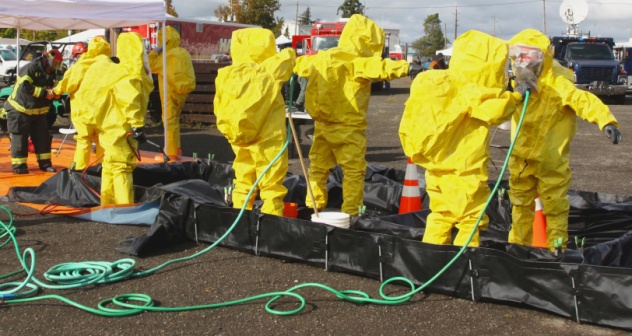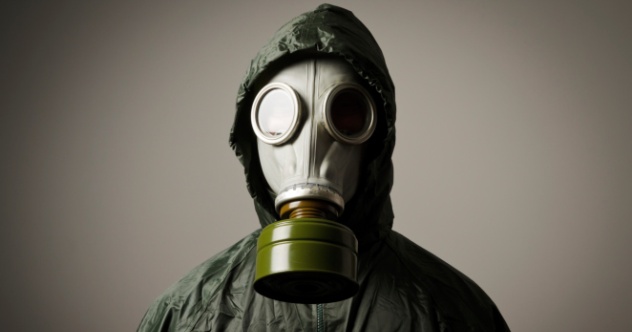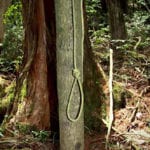 Weird Stuff
Weird Stuff  Weird Stuff
Weird Stuff  Mysteries
Mysteries 10 Tragic Disappearances and Deaths in Joshua Tree National Park
 History
History 10 Ways Childhood Really Sucked in the Old West
 Music
Music 10 Name Origins of Famous Bands from the 1990s
 Religion
Religion 10 Biggest Turnarounds by the Catholic Church
 Weird Stuff
Weird Stuff 10 Unbelievable Times Laws Had Unintended Consequences
 Humans
Humans Ten Historic Women Who Deserve Way More Credit Than They Got
 Movies and TV
Movies and TV 10 Films That Spawned Major Lawsuits
 History
History Ten Times Towns Were Wiped Off the Face of the Earth
 Creepy
Creepy 10 of the Most Disturbingly Haunted Public Houses in the UK
 Weird Stuff
Weird Stuff 10 Niche Subcultures That Are More Popular Than You Might Think
 Mysteries
Mysteries 10 Tragic Disappearances and Deaths in Joshua Tree National Park
 History
History 10 Ways Childhood Really Sucked in the Old West
Who's Behind Listverse?

Jamie Frater
Head Editor
Jamie founded Listverse due to an insatiable desire to share fascinating, obscure, and bizarre facts. He has been a guest speaker on numerous national radio and television stations and is a five time published author.
More About Us Music
Music 10 Name Origins of Famous Bands from the 1990s
 Religion
Religion 10 Biggest Turnarounds by the Catholic Church
 Weird Stuff
Weird Stuff 10 Unbelievable Times Laws Had Unintended Consequences
 Humans
Humans Ten Historic Women Who Deserve Way More Credit Than They Got
 Movies and TV
Movies and TV 10 Films That Spawned Major Lawsuits
 History
History Ten Times Towns Were Wiped Off the Face of the Earth
 Creepy
Creepy 10 of the Most Disturbingly Haunted Public Houses in the UK
10 Unsettling Facts About Japan’s Creepiest Cult
On March 20, 1995, five men boarded the Tokyo subway carrying small packages of deadly sarin. As their trains approached the city center, each man calmly punctured his package with the tip of an umbrella and exited, leaving the sarin behind. The resulting cloud of nerve gas killed 12 people and injured as many as 5,500. The entire city was paralyzed. Hospitals overflowed. Subway stations resembled battlefields. It was the worst terror attack in Japanese history.
By summer, it was clear that Aum Shinrikyo was responsible. An apocalyptic cult built on a mixture of Buddhist and Christian teachings combined with yoga, the group had convinced its members that they needed to trigger an apocalypse as soon as possible. But the subway attack wasn’t just a random one-off. It was the culmination of years of creepy incidents involving Aum, each one scarier than the last.
10 The Brutal Sakamoto Murders

In 1989, Tsutsumi Sakamoto had every reason to be cheerful. His wife had just given birth to a baby boy, his legal career was taking off, and the young lawyer was making a name for himself taking on the new Aum cult in Tokyo. Then, in November, Tsutsumi and his family vanished. There was no note, no explanation, and no evidence. Japan’s police groped blindly in the dark, unsure if the Sakamotos had simply cut and run or if something darker was at work.
Fast-forward to 1996. As part of the marathon series of trials following the subway gas attack, Aum member Tomomasa Nakagawa was cross-examined about the cult’s past crimes. The disappearance of the Sakamoto family came up. Nakagawa’s response was chilling. Fed up with the hotshot lawyer interfering in their business, Aum had decided to have Tsutsumi brutally murdered.
The original plan had been to kill him on his way home from work. Unfortunately, the date that the Aum leadership chose just happened to coincide with a public holiday. Rather than wait 24 hours, the six selected assassins decided to go to the Sakomoto home and finish the job.
At 3:00 AM, they entered the house. Tsutsumi and his wife were asleep in bed. One member strangled Tsutsumi, while another kicked his wife half to death before strangling her, too. Her last words were, “Please save the child, at least.” Instead, the sect members located the baby and suffocated him with his bedding. They then drove the three bodies out into Japan’s remote countryside and buried them in metal drums. Although Aum was suspected of being involved, the authorities failed to investigate properly. It wasn’t the only time that the police let Aum get away with their crimes.
9 Kidnapping And Extortion

For a newly emerged cult, Aum was surprisingly sophisticated about funding itself. Members would have to pay to reach enlightenment, and special seminars costing tens of thousands of dollars were regularly held. At one point, the group even began operating its own restaurant chain and selling computers. However, by far, the most common means of funding came from extortion.
At its most harmless, this involved blackmail on an industrial scale. Towns and cities across Japan would be contacted and told that Aum planned to open a compound there. They were then given the option to pay hundreds of thousands of dollars to keep the cult away. Most of them coughed up. More harmfully, the group entered into business with the Yakuza to manufacture and help sell illegal drugs.
Worst of all were the kidnappings. Cult members would be quizzed over their families’ earnings. If it turned out that they were related to someone wealthy, they would frequently be ordered to kidnap that relative. One innkeeper was taken hostage by his own daughters, tortured, and forced to hand over 60 million yen. The tactic was scarily effective. By 1995, the cult was estimated to have a net worth of around $1.5 billion.
8 They Built Their Own WMD Testing Ground

When Australian Federal Police raided the Banjawarn ranch in 1995, it was like they’d stepped into a nightmare. Remote parts of the property were littered with the carcasses of sheep that had died in agony. Tests revealed that they’d been poisoned with sarin. In the abandoned house, policemen stumbled across a vast chemical weapons lab, primed to produce nerve gas. Horrifically, it began to dawn on them that they’d uncovered a testing ground for weapons of mass destruction.
Purchased by Aum in early 1993, Banjawarn had long been associated with suspicious activity. On May 28 of that year, local seismographs shot off the scale. A loud boom echoed out across the desert, followed by a rumble that was felt dozens of miles away. Locals reported seeing a fireball leap up into the sky. Following the 1995 raid, police discovered an active uranium mine on the ranch, leading some to conclude the explosion had been Aum testing its own crude nuclear weapon.
While there is no concrete evidence that Aum ever came close to having a nuclear device, there’s no doubt that Banjawarn saw some horrific experiments. The group was later found to have been creating anthrax and nerve agents like Soman at the ranch, some of which had been tested on the local wildlife.
7 They Carried Out Multiple Germ Attacks

As early as 1990, Aum’s leadership was planning mass-casualty terror attacks. In April of that year, they modified a van to emit a fine spray as it drove and then loaded up with samples of botulinum toxin. The group then drove it through central Tokyo, spraying the Japanese parliament with one of the deadliest bacteria known to man.
Thanks to the cult’s poor understanding of germ warfare, the attack released a harmless version of the bacteria. But it inspired them to greater, scarier heights. Two years later, the group managed to acquire some anthrax. A stupendously deadly strain of bacteria, anthrax can kill you in unimaginably gruesome ways. If you happen to get infected by inhaling it, you’ll almost certainly die even with treatment. Aum took their anthrax samples, loaded them into giant aerosols, and tried to spray the whole lot over Tokyo.
A successful anthrax attack could have killed thousands. Thankfully, Aum had accidentally acquired a vaccination strain that was harmless to humans. Less happily, the repeated failure of their germ attacks is what inspired them to move on to sarin. By 1994, they’d successfully tested their new gas in the town of Matsumoto, killing eight people and wounding nearly 500.
6 Gruesome Assassinations

In 1994, Tadahiro Hamaguchi became one of history’s most gruesome firsts. On a late-night walk through Osaka, he became possibly the first person in history to be killed by VX.
A nerve agent developed by the British after World War II, VX is so deadly that it makes sarin look like laughing gas. A single drop absorbed through the skin can kill you so fast that there would be no time to inject an antidote. For a brief period in the mid-1990s, Aum used it to murder their enemies.
From 1994–95, more than 10 VX assassinations were carried out by the cult, usually by injection. The one man lucky enough to survive a spray attack was hospitalized for 45 days and left in a coma. As bad as that was, it was just the start of Aum’s long list of terrifying assassinations.
Others were kidnapped and hanged on Aum property, their bodies incinerated in purpose-built microwaves. One such victim was Kiyoshi Kariya, a 68-year-old man whose brother was trying to quit the group. Kariya was kidnapped, drugged, held hostage, murdered, and then finally burned in one of Aum’s incinerators. His ashes were scattered in a lake, so no trace of him would ever be found.
When Aum’s compounds were finally raided after the Tokyo subway attack, police discovered that at least eight other people had met the same hideous fate. They also discovered an assassination list. Had the cult not blown their cover with the 1995 sarin attack, the number of people incinerated in Aum’s ovens would have likely been much, much higher.
5 They Tortured Their Own Followers

One of Aum’s central tenets was that followers had to gain enlightenment through suffering. Although that sounds like the sort of meaningless platitude that any religious sect might come out with, Aum took it very seriously. When no suffering was forthcoming, they tortured their own followers to create it.
Most famously, this involved their “thermotherapy” ritual. Followers would be dipped in scalding hot water to purify themselves, a practice that led to burns and at least one death. When physical pain wasn’t enough, the cult turned to the mental realm. Multiple initiation ceremonies involved the forced ingestion of narcotics and hallucinogens, followed by public emotional humiliation. Followers were frequently fed LSD, often without their even knowing they had taken the drug.
For those who tried to escape the cult, things were even worse. Aum operated its own prisons and torture chambers, hidden inside giant shipping containers. Suspected dissidents could face all manner of brutal interrogation methods, if they weren’t simply killed outright. Yet, none of this seemed to even dent their popularity . . .
4 Mass Membership And Power

For a doomsday cult that was suspected of murder and tortured its own followers, Aum sure didn’t have any problems attracting new converts. At its height in 1995, the sect had an estimated 50,000 members, most living in Russia. This significant following translated into something tangible—power.
Aum’s foothold in Russia was nothing if not terrifying. In less than half a decade, the group had managed to set up its own university in Moscow and had begun targeting disaffected students for recruitment. They even tried to set up their own company in the hopes of brainwashing the employees that would flock to them during the next economic downturn. By the mid-1990s, they were even controlling radio transmissions out of Vladivostok, broadcasting nightly television programs on Russia’s popular 2X2 channel and having their Japanese members trained for violence by Russian special forces.
All of this influence paid off. The group began actively courting Russian nuclear scientists and even purchased a military attack helicopter. Money rolled in, and Aum grew increasingly bold.
3 A Deadly Arsenal

In the aftermath of the Tokyo subway attack, Japanese police raided Aum compounds across the country, hunting for more sarin. What they found was chilling. Aum had established vast chemical factories capable of producing literally tons of sarin. A highly effective nerve agent, sarin can cause seizures after exposure to a single drop. Aum was stockpiling enough to power a country-wide war.
Sarin wasn’t the only weapon that Aum’s chemical warfare department was developing. Up to 80 members were found to be developing mustard gas, sodium cyanide, phosgene gas, tabun, and VX to use against civilian populations. At the same time, a dedicated biological warfare lab was churning out a nonstop assembly line of horrors. Anthrax, Ebola, and the deadly Q-Fever were all being developed as weapons, all potentially capable of wiping out thousands of people.
By this time, the full extent of Aum’s arsenal was becoming clear. The group had also taken to manufacturing AK-47s, building enough to equip their own paramilitary outfit. They’d acquired a drone from somewhere and modified it to spray nerve agents on those below. All in all, Aum were found to be better equipped for war than many armies. That they didn’t deploy their capabilities more intelligently is a matter of pure fortune.
2 The Second Gas Attack

In a disturbing alternate universe, the March 20 gas attack on the Tokyo subway is today known as simply a warm-up. Less than two months later, on May 5, 1995, two men from Aum left a mysterious bag in the restroom at Tokyo’s Shinjuku Station. Inside was a timed weapon, set to release a deadly cloud of cyanide gas directly under a main ventilation shaft. Had it gone as planned, it’s estimated that this second gas attack could have killed as many as 10,000 people.
That it failed is down to nothing more than dumb luck. A cleaning woman found the bag and moved it out of sight behind a door. By sheer fluke, the way she carried it resulted in the bomb’s trigger mechanism getting knocked out of place. When the timer reached zero, instead of exploding, the bag burst into flames. Although this could still have caused the cyanide to be released, it caught the attention of passersby, who managed to put out the fire before catastrophe occurred.
Although two Aum members were later convicted of planting the cyanide bomb, the cult wasn’t done yet. Even with its leaders in prison, letter bombs were sent out to the governor of Tokyo, wounding one official. More cyanide bombs were planted on the subway, although these attacks were foiled once again.
Luckily, it couldn’t last. By fall 1995, Aum was spent as an organization. Police raids shut down its chemical and biological weapons laboratories and confiscated its small arms. Finally, after over 30 deaths and close to 6,000 injuries, Aum appeared to be over. But then, the impossible happened . . .
1 They’re Still Active

In the West, we often wonder why our young run away to join ISIS, an organization known for its brutality. In Japan, they think the same about Aum Shinrikyo.
Now rebranded as Aleph, the cult has fallen from its 1990s heights but is still going strong. In November 2011, Japanese police estimated its membership at around 1,300, with 200 new recruits joining every year. Adherents claim that Aleph has changed its ways; others aren’t so sure.
Even now, over 20 years after the Tokyo gas attack, there are still reports of Aleph brainwashing its members. Followers have been convicted of forcing relatives to join, and many wonder if things ever really changed. In 1999, The Guardian uncovered evidence of continuing “thermotherapy” rituals, in spite of their involvement in a member’s death. In 2000, cultists were caught trying to gather confidential information on nuclear plants, and in 2001, several members were arrested in a plot to bomb Russia.
Perhaps most pertinently, many survivors of the 1995 sarin attack still consider Aleph to be a threat to Japan. Many are worried that mainstream society has already forgotten about the attack and that something similar could happen again. Japan’s security forces agree. As of July 2015, the Aleph cult is still under close surveillance.








